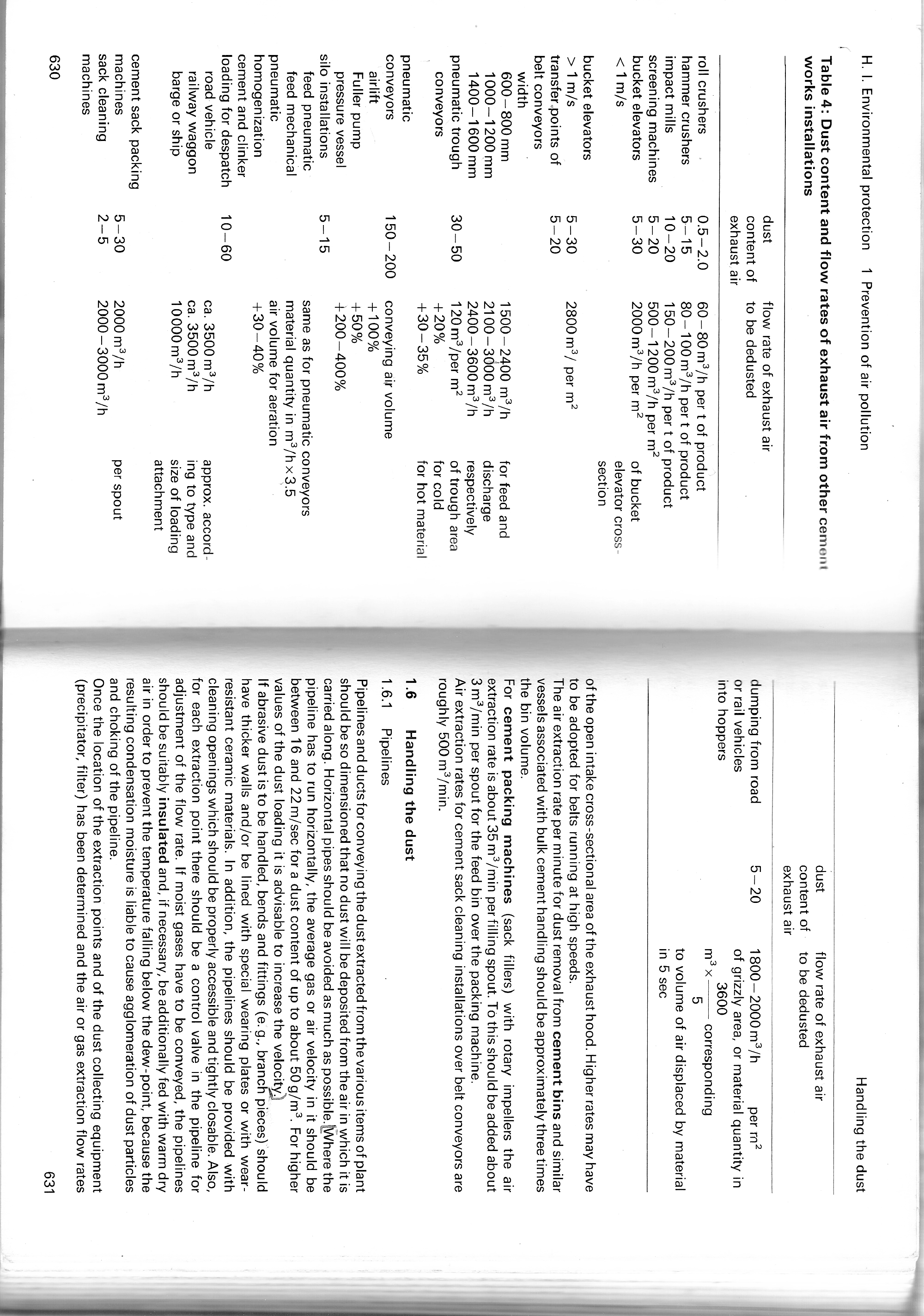
Dust Collection Nozzle Size
Hi Lohar,
A lot depends on the detail of the chute. See http://www.cospire.com/browse Engineering Tips / Bulk Solids / Dust Control.
Talk to your Baghouse Manufacturer. They will be happy to advise you.
Regards - John.Rz ■
Re: Conveyor Discharge Duct Design For Dust Collector
The MHEA "Recommended Practice for Troughed Belt Conveyors" suggests 0.5 m3/s per metre of belt width. Very dusty materials may require double this figure. ■
Re: Conveyor Discharge Duct Design For Dust Collector
American Conference of General and Industrial Hygienists (ACGIH), recommends 350 cfm/ft belt width for belt speeds upt 200 fpm and 500cfm/ft of belt width for belt speeds over 200 fpm ■
Playing With Thumbs
Hi,
Nice rule-of-thumbs lads, but where is the proof? What are the conditions? What free-air opening, what gap? Unless we get more serious it smells too much like guessing.
Please advise - John.Rz ■
Conveyor Discharge Duct Design
These rules-of-thumb assume tight enclosure around the head pulley, properly adjusted skirts, adequate extension of the enclosure on the following conveyor, split rubber curtains at the inlet and exit openings etc. Look at ALL the guidelines in the referenced manuals.
These exhaust quantities are proven and modified by long practical experience.
Michael Reid. ■
Re: Playing With Thumbs
Originally posted by john.rz
Nice rule-of-thumbs lads, but where is the proof? What are the conditions? What free-air opening, what gap? Unless we get more serious it smells too much like guessing.
As far as the MHEA guide is concerned, figures acceptable to the members who provided the input to the guide. So guesses maybe, but also backed by practical experience. All part of the years and years of making, supplying and installing materials handling equipment before research organisations started to take an interest in materials handling.
What would be your guidelines and their basis? ■
Dust Collectors
Thumb rules are for cross-checking what is offered by vendors. I have used attached tables from Cement Engineer's Handbook (B. Kolhaas : Bauverlag GMBH) for verification as well specifying and checking dust collectors in areas required to be cleaned after norms started becoming stringent for dust in working areas. ■
Dust Collectrs
Dust collectors
Thumb rules are for cross-checking what is offered by vendors. I have used attached tables from Cement Engineer's Handbook (B. Kolhaas : Bauverlag GMBH) for verification as well specifying and checking dust collectors in areas required to be cleaned after norms started becoming stringent for dust in working areas.
vinayak sathe
15, Rangavi Estate,
Dabolim Airport
403801, Goa, India

href="mailto:vinayak.sathe@gmail.com">vinayak.sathe@gmail.com
Attachments
■
Excellent
Thanks vinayak,
Excellent information. Now we are getting serious and talking like experienced dust control engineers.
Regards - John.Rz
www.cospire.com / Engineering Tips / Bulk Solids / Dust Control ■









Conveyor discharge Duct design for dust collector
Hello Sir,
I have a problem regarding, dust collection at the belt conveyors. But I am not able to deside the capacity of the dust collector that has to be installed. One major thing I wanted to know is the procedure to calculate the air volume required at the diacharge of the belt conveyors.
Pls clarify for the above and kindly also give some formulae for the calculation of the volume of air at the discharge
Thank U,
mnlohar ■